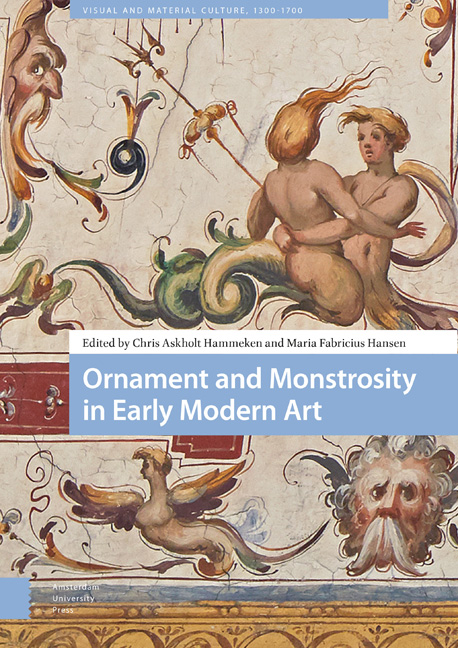5 - Decoration in the Desert: Unsettling the Order of Architecture in the Certosa di San Martino
Published online by Cambridge University Press: 21 November 2020
Summary
Abstract
This chapter examines the early-seventeenth-century decoration of Cosimo Fanzago at the Carthusian monastery of San Martino, Naples. Mixing classical architectural vocabulary and strange, organic flourishes, Fanzago's work is powerfully suggestive, yet never settles down into recognizable elements. This chapter considers how such monstrous, non-figural ornament might be interpreted without recourse to iconography. Fanzago's doorways both question the limits and celebrate the potential of classical architecture. Their fluid, polymorphous forms echo contemporary anxieties about architecture's monstrous productivity. The unsettling, unravelling decoration furthermore questions the nature of monastic enclosure. Through comparison with a Carthusian book of emblems, the chapter reconsiders the space of retreat, and argues it is Fanzago's exploitation of the productive potential of the gap that makes his strange decoration fit for a Carthusian cloister.
Keywords: decoration, ornament, monastic architecture, Carthusians, Cosimo Fanzago
The whitewashed walkways of the Great Cloister at the Certosa di San Martino in Naples (Ill. 5.1) do not feature grotesques or beasts. Yet in Cosimo Fanzago's carved marble door surrounds (Ill. 5.2) in the four corners of the walkway, one is confronted with architecture that is disconcertingly fluid, polymorphous, unsettling (Ills. 5.3 and 5.4). Split between presenting doors and presenting busts, the surrounds impinge upon the viewer's attention and trouble the distinction between content and framing. Fanzago's flourishes evoke elements of classical architectural vocabulary, yet the forms are in a constant state of flux, twisting, turning, deforming, and appearing in strange places. Although powerfully suggestive of monstrous creatures or faces, they never quite coalesce into fin, face, or tendril.
This chapter considers how these difficult forms might be interpreted. The nonfigural nature of the decoration makes it particularly challenging in the context of one of the most austere monastic orders. Neither here nor there, the forms escape definition. This chapter considers how Cosimo Fanzago's ornament troubles architecture and how its monstrous character taps into wider architectural discourses. In avoiding too literal a view of monstrosity, however, this study also aims to draw out the potentialities of ornament which become obscured by an iconographic approach, and which allow decoration to be considered a crucial, constructive component of the functioning of architecture.
- Type
- Chapter
- Information
- Ornament and Monstrosity in Early Modern Art , pp. 153 - 174Publisher: Amsterdam University PressPrint publication year: 2019

